Patrick’s Thoughts: Intel Core i9-11900K From a CS:GO Global Elite
For this review, I wanted to discuss something a bit different than our normal coverage. A bit of STH-related backstory is involved. My first dedicated “server” that I hosted was actually the University of California Santa Barbara’s main on-campus Counter-Strike server in 2000-2001. This ran on a single-core processor and typing a message in the console caused the entire server to have massive stuttering. At the time, I was the top stats Counter-Strike player on campus and used to win “water” money or 30 packs of “water” by playing in and winning tournaments. Professional gaming and Twitch-style streaming were not what they are today.
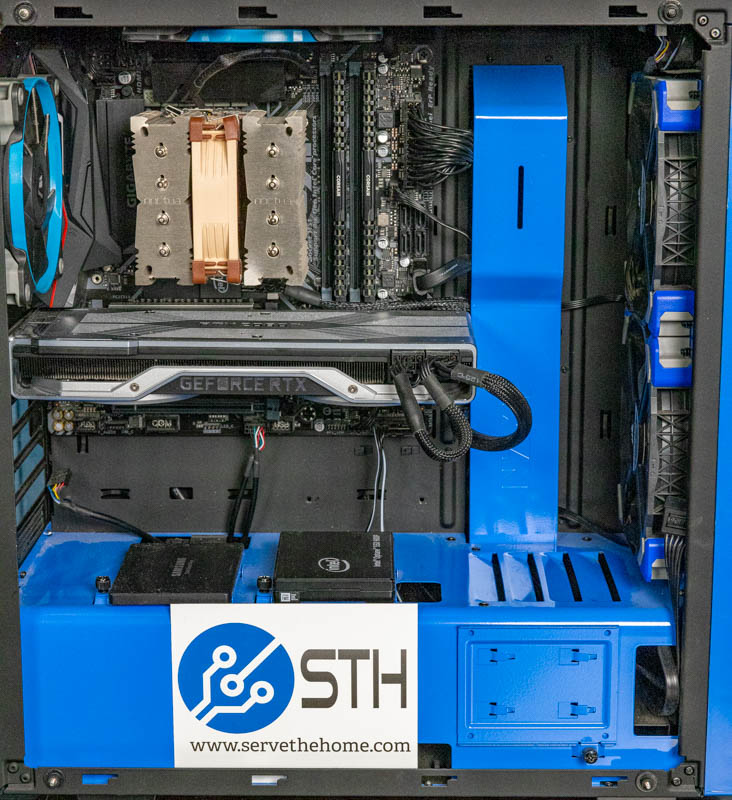
Fast-forward to the global pandemic, and I fired up the database server that sits in my office using a Core i9-9900K and tried a few games on it. I think very few folks will upgrade from a Core i9-10900K to a Core i9-11900K, so I wanted to look at one generation prior with a simple task, comparing a two-generation upgrade to this new solution to see if there is an impact in a widely played game. Intel likes to talk about real-world benchmarking, but there is a question of perception over raw benchmarks.
For a bit of background, I tried other titles over the pandemic. DOTA 2, League of Legends, Among Us, Fall Guys, Valheim, Assassin’s Creed Odyssey and Origins, and even Cyberpunk 2077. All were fun, with the exception of Cyberpunk 2077 that I managed to “beat” in a few hours. For that game, I see “beating the game” as uninstalling.
CS:GO was a fun one though bringing me back to 20 years prior. For those who are unaware, Counter-Strike Global Offensive is a FPS game but it is also a fiercely competitive game. It is not the newest game, but it has a large player base that has existed for many years. In the game, there is a ranking system with 18 levels from “Silver I” to “Global Elite”. Global Elite is generally the top <1% of all players. As such, there are numerous videos and streams about the long process to Global Elite. There are many professional players who are 1-3 ranks below this in-game matchmaking feature.

As a few bits of disclosure before we get into it, the competition on third-party matchmaking is much better. I also will say that being 20 years older, my reaction time is nowhere near what it was as a teenager. I am also not very good at the game, but I enjoy the strategic aspect of competitive and playing some of the less desirable positions. Still, one does not get to “Global Elite” without having zero skill and reaction time. My quest was simply to determine if upgrading from the Core i9-9900K to the Core i9-11900K could turn back the clock and make me better at CS:GO.
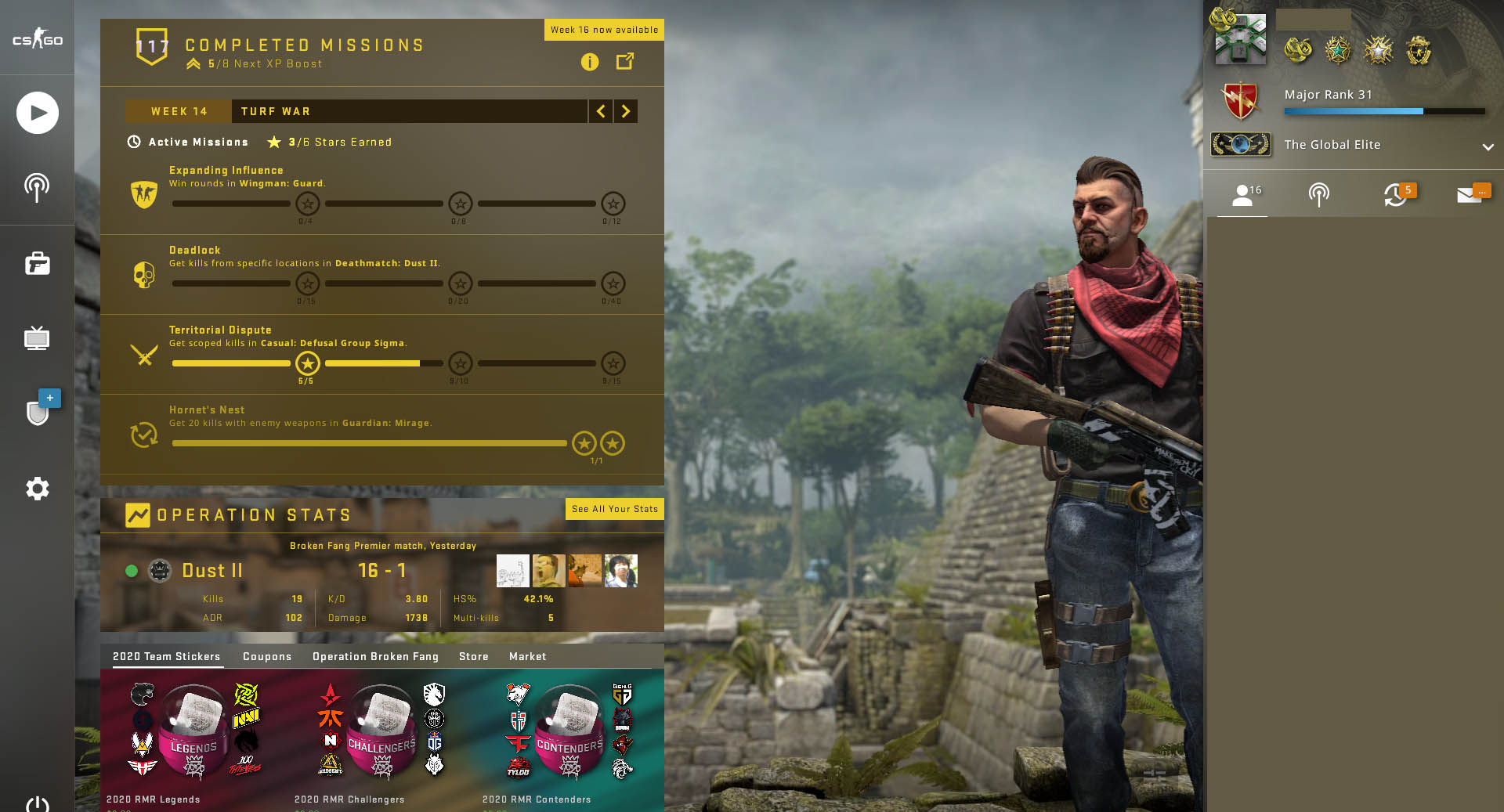
For the experiment, I had the existing Core i9-9900K system with the NVIDIA GeForce RTX 2080 Ti. At first, I wanted to keep the setup simple and use the same GPU, but I also thought that if one is buying a new CPU, motherboard, and potentially memory, then maybe a new GPU is possible as well so I also tried the system with a NVIDIA GeForce RTX 3090. The RTX 3090 is too high-end of a GPU for a lower-end platform like the Core i9-11900K, but for the experiment, it should serve to eliminate the GPU variable. The reason I am using NVIDIA GPUs is that I am accustomed to the 2080 Ti and my ASUS 280Hz (overclocked) 1080 panel is a NVIDIA G-Sync unit. I tried on an Alienware AW2721D 240Hz 1440p and I was worse. Bigger pixels apparently mean I play better.
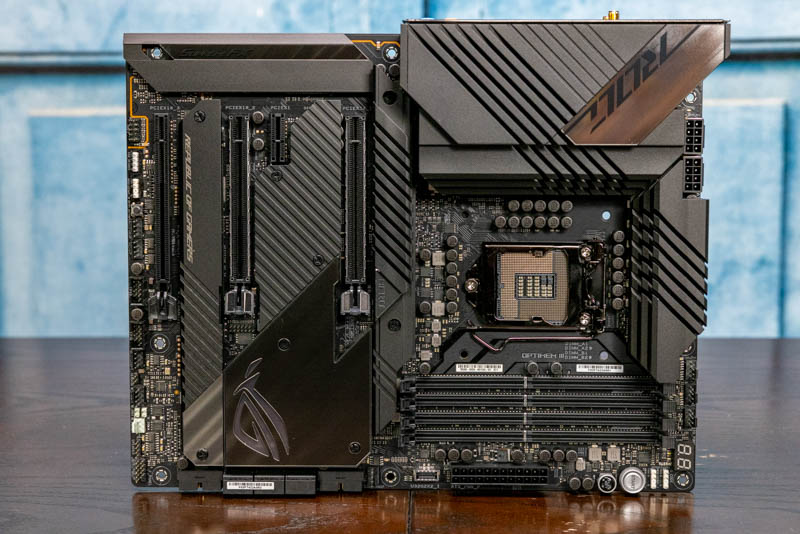
After alternating games on the systems back-to-back here is the data.
The kill/ death ratio is the number of times one successfully defeats an enemy over the number of times one is defeated. A higher ratio means a higher success rate and is generally better. CS:GO is a team-based game, but individual metrics still matter.
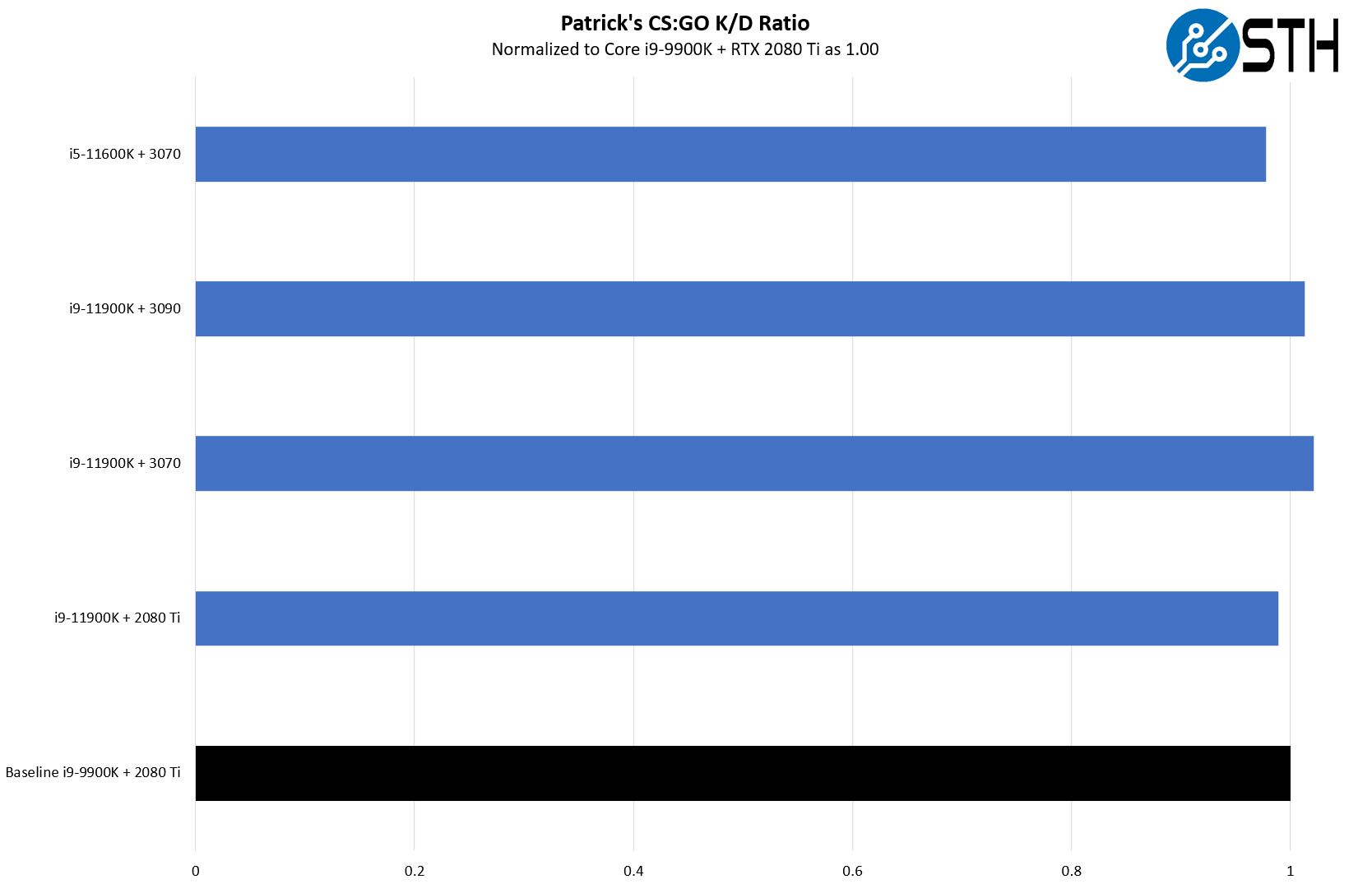
Here is a close-up view to further highlight differences because using a zero X-axis is hard to see differences.
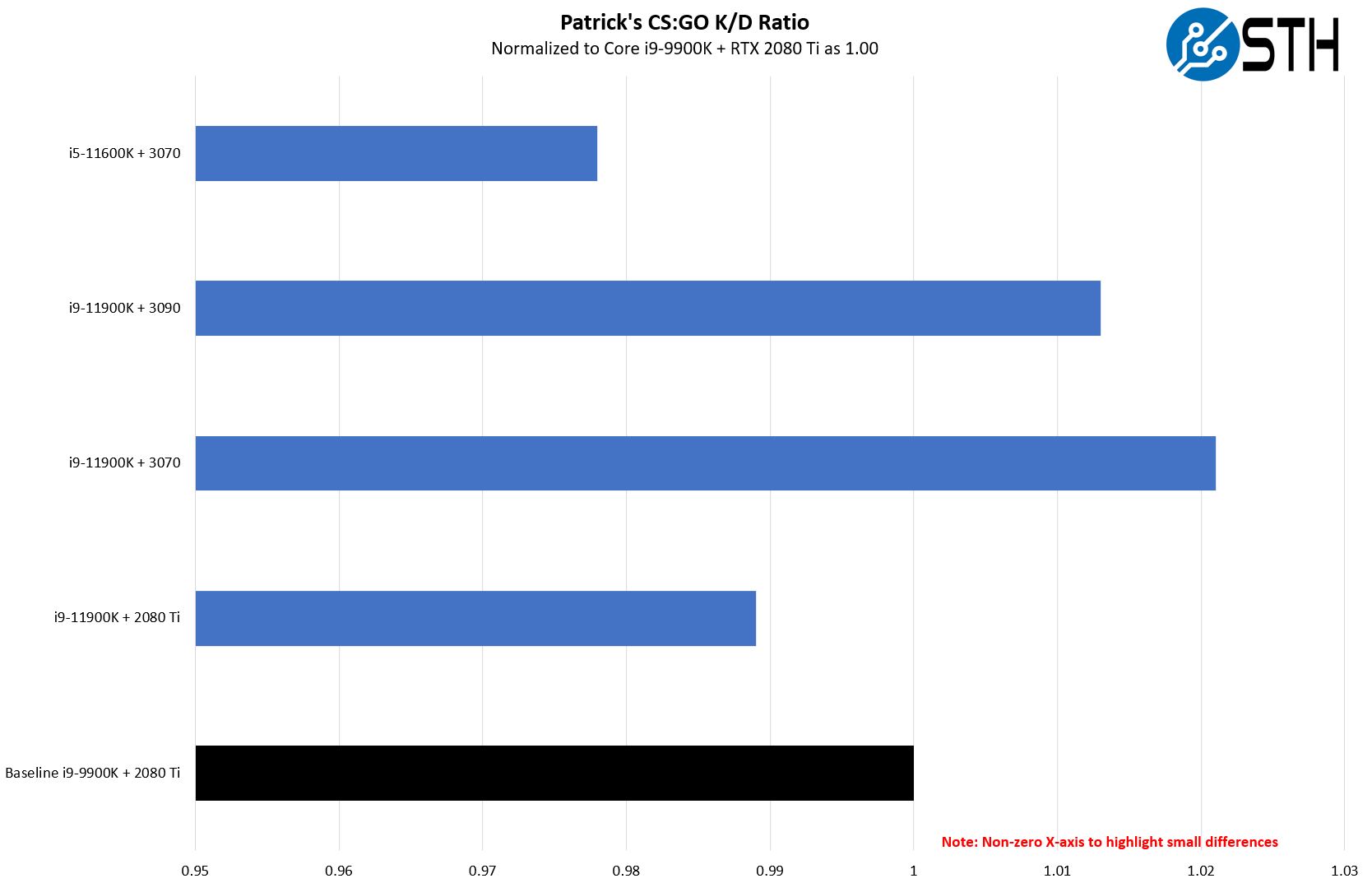
Another metrics is average damage per round or ADR. Since CS:GO is a team game, one could, in theory, not defeat enemies, but instead do a lot of damage which helps teammates later. Again, we are normalizing to the baseline of the Core i9-9900K + 2080 Ti combination.
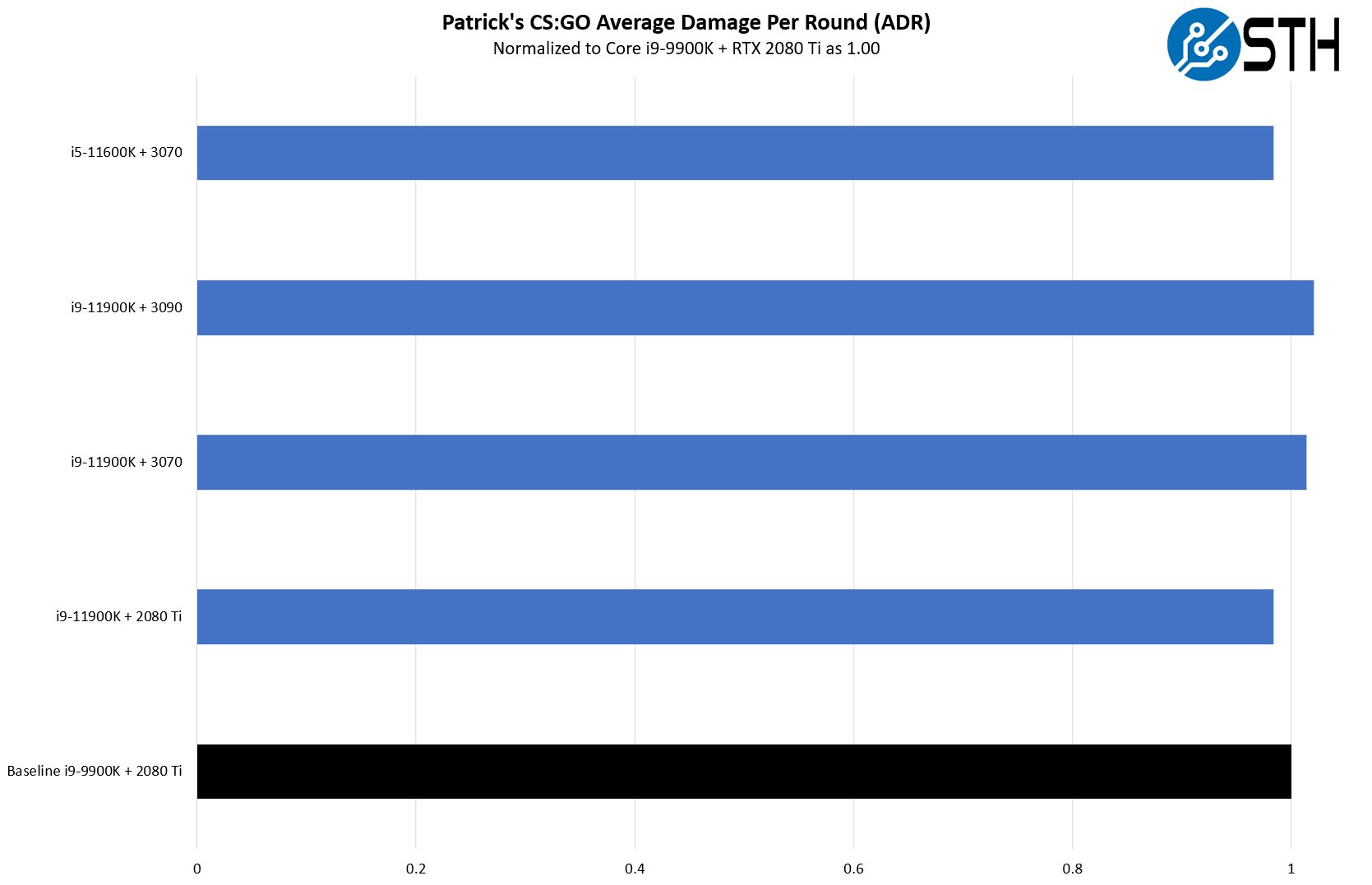
Here is the closer look version as well. Again, with a non-zero axis.
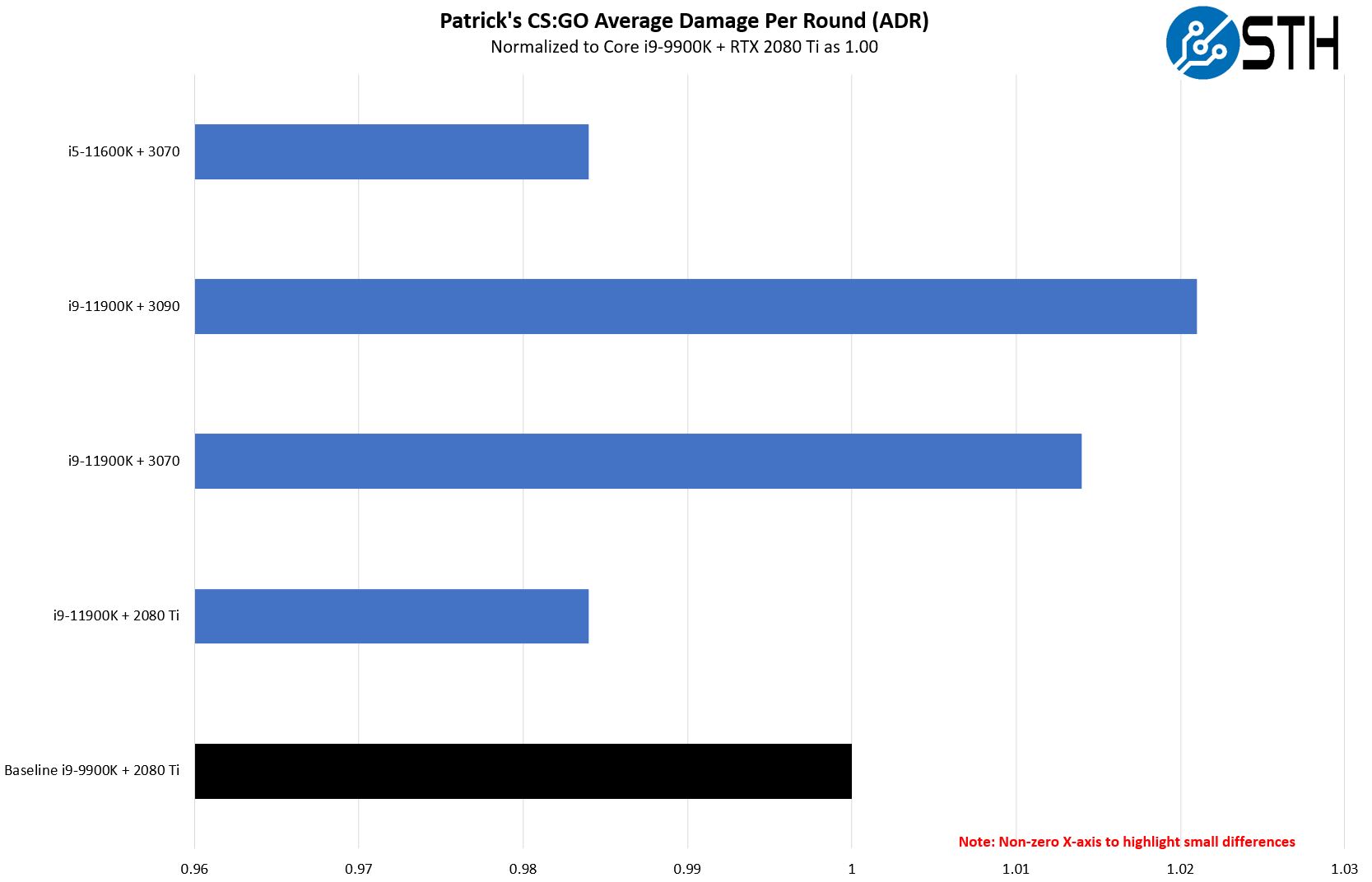
As one would expect, the pattern is a bit different albeit directionally similar. Here is a look at the side-by-side:
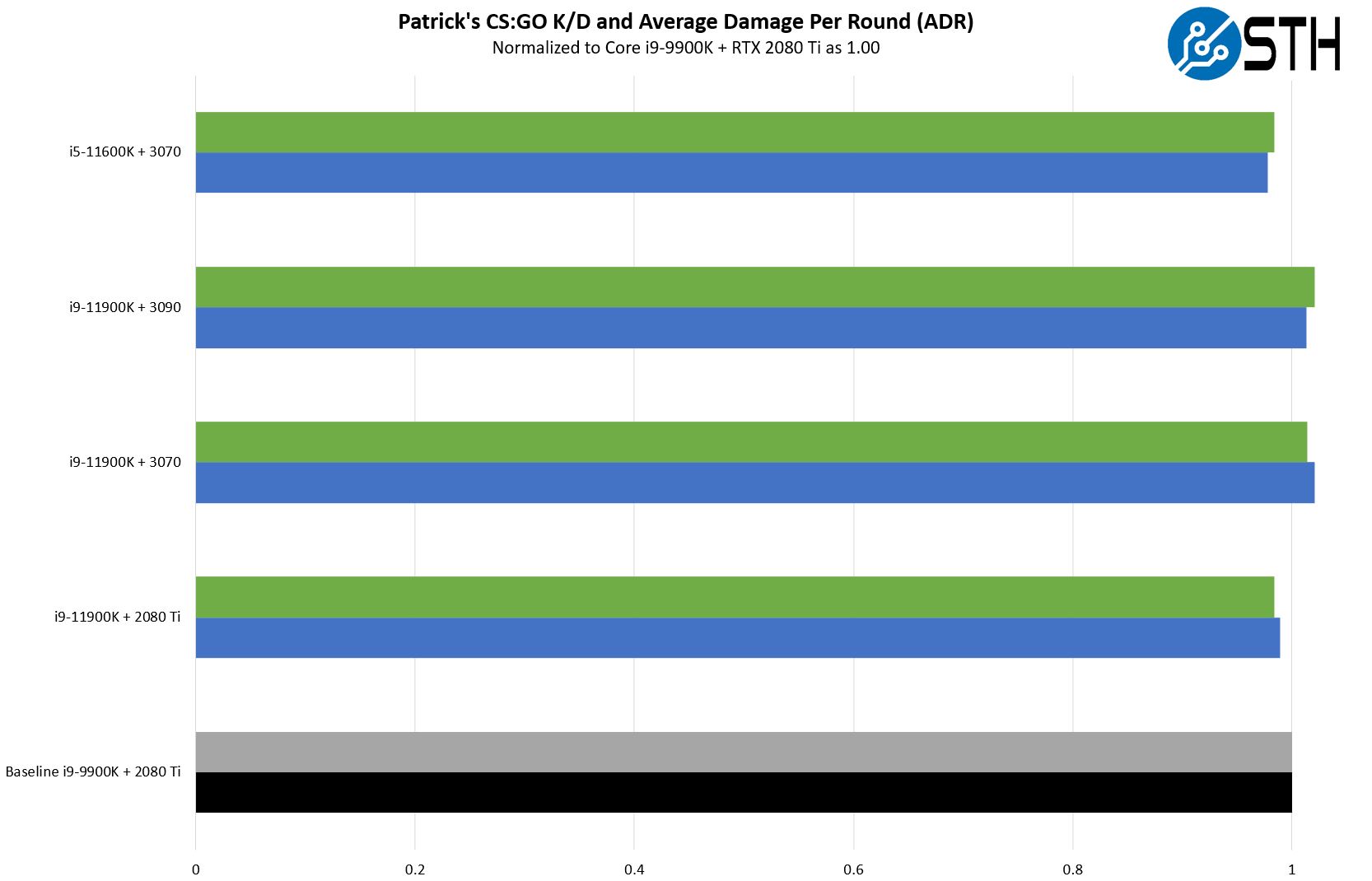
Here is the data zoom-in:
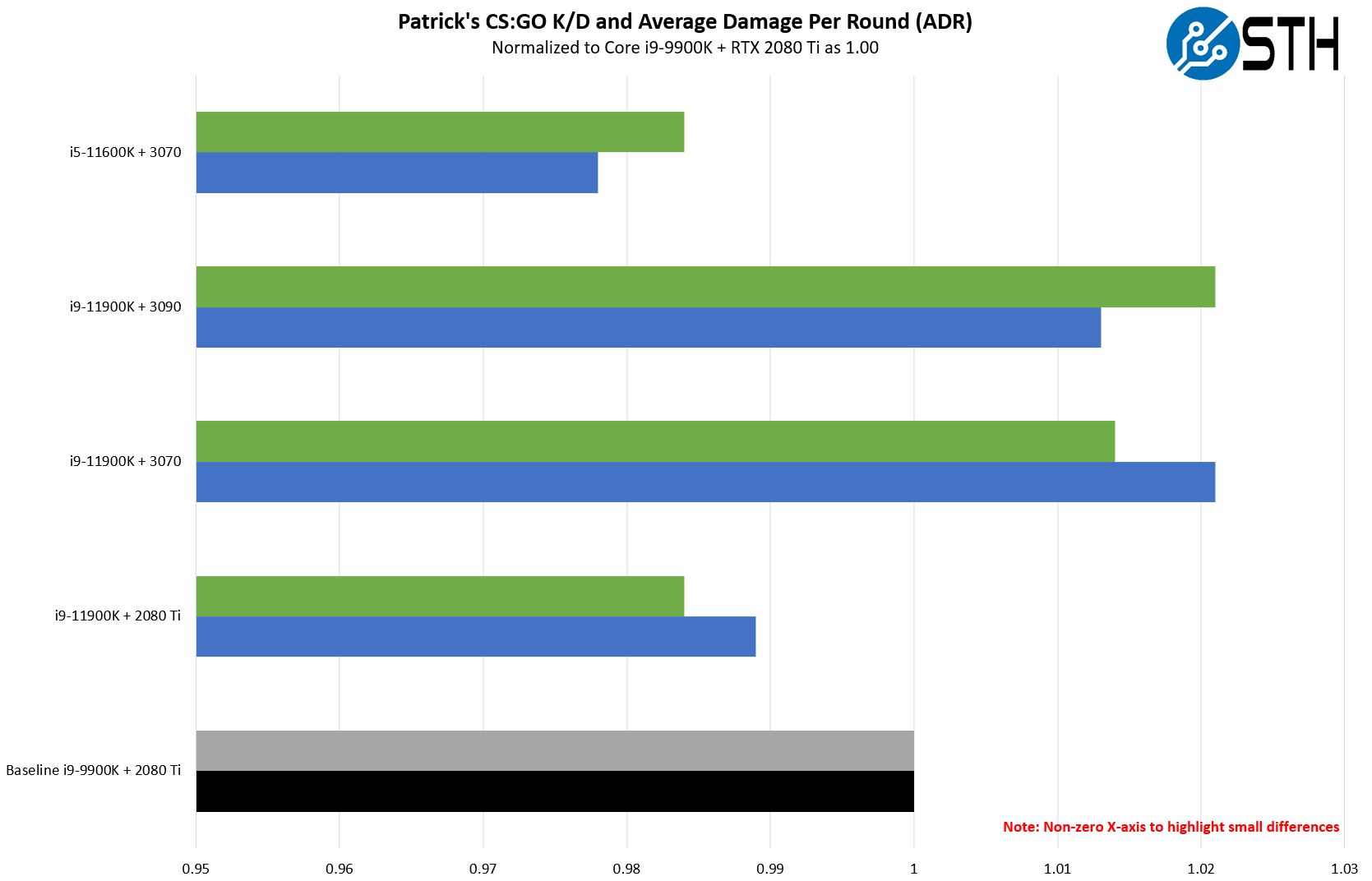
One important aspect here was being able to get a large enough sample size. Ideally, we would have been able to collect twice as much data, but this takes a long time to collect. Still, after around the 350K mark, the data started smoothing as we went from individual plays influencing my performance to getting into a large enough data set where it started to look more like averages. While the performance was better, it was only around 1.5-2% better on the higher-end configurations. This is not enough to move a Silver or Gold Nova to Global Elite.
On the qualitative side, to be frank, I could not perceive a difference between the two setups when actively engaging. The numbers do not suggest a large variance, and I feel like that is about right. I tried different days, different times of day, different maps, and the fact is, that there was not a huge difference.
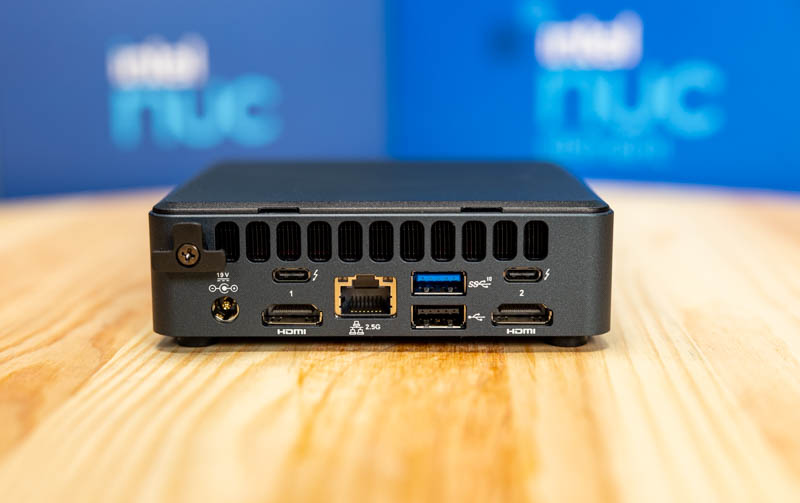
I think this comparison is focused more on the top-end though. I tried playing on the Intel NUC 11 Pro we reviewed and started feeling nauseous.
What is discussed more in the video is that the bigger impact was using an Intel Optane 900p drive as my data drive, plus a fast PC allows me to avoid playing games with cheaters. This helps avoid approximately 25% of games with cheaters and therefore helps have fewer losses and thus seems like a bigger ranking boosting factor than the CPU/ GPU used after a certain point. That will almost never be discussed on other sites/ or “how to make Global Elite” videos, but it is one of the most important factors and is directly influenced by a hardware component. It just does not sell a lot of CPUs/ GPUs.
Next, we are going to get back to John’s analysis and final words.




I’m shocked. Amazing CSGO tests
Had to doublecheck if this was an aprils fools joke. That 7-zip comparison makes zero sense.
The CSGO test would have passed as a joke if it weren’t for the botched benchmarks earlier. Also Ian Cutress said based on cache size, rocket lake is not Tiger Lake but Ice Lake backported
I watched a few youtube reviews about these chips and pretty much all the reviewers botched them this time. What the hell, man.
“Still, one does not get to “Global Elite” without having zero skill and reaction time” – may want to double-check the word order in that :) Normalised K:D is a benchmark every piece of hardware needs!
Got a chuckle out of winning 30 packs of “water” and “water” money. Nice review.
Need more PCIe lanes. Must have more PCIe lanes. Even just four or eight more PCIe lanes.
Ahem, more CPU PCIe lanes, not cough cough platform PCIe lanes.
I had to laugh at the “discrete” WiFi 6E support.
These chipsets don’t have ANY Wifi 6E technology integrated. This “discrete” technology means that the manufacturer must buy those standard chips/cards to support these.
In fact Intel didn’t even release a CNVi version of the AX210 yet (really hope Intel gave up on CNVi), unlike the AX201 for WIFI 6 (non-E). There is just the PCIe/USB version that is supported by ALL systems. I know that because last week I bought a AX210 for my i3-8100 system and it works fine (I couldn’t test 6Ghz because I don’t have a 6E router yet).
Ok same story with 2.5Gbps Ethernet. That is NOT integrated in the chipset. That “platform” talk is ridiculous. You need to step up your critical reading skills when it comes to Intel marketing.
You can see on the slide that it only has 1 Gbps MAC integrated and it needs an external MAC/PHY aka complete controller for 2.5 Gig.
That’s why your board has the standard Intel I225-V that can also be found on more expensive Z490 boards of the last generation or even on AMD AM4 boards.
Same with “discrete” Thunderbolt. They still need an external TB chip (or board if theres a header on MB). The same chips have been used on older Intel generation boards (and even on some AMD boards).
Of those “additions to the platform” you mentioned only 20 gbps is really integrated.
Huh, playing for water? I’d rather play for beer